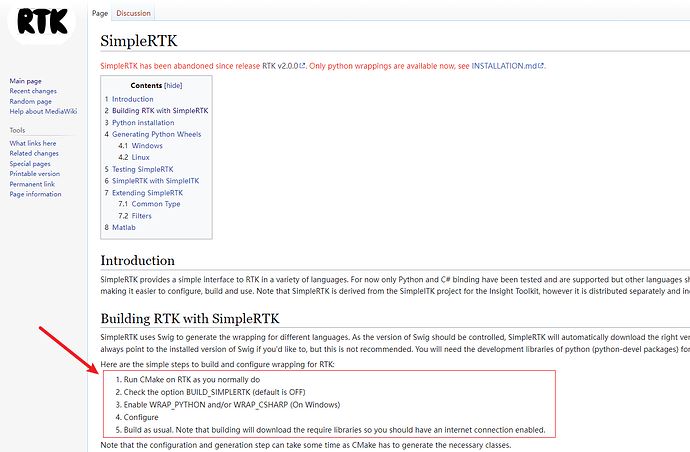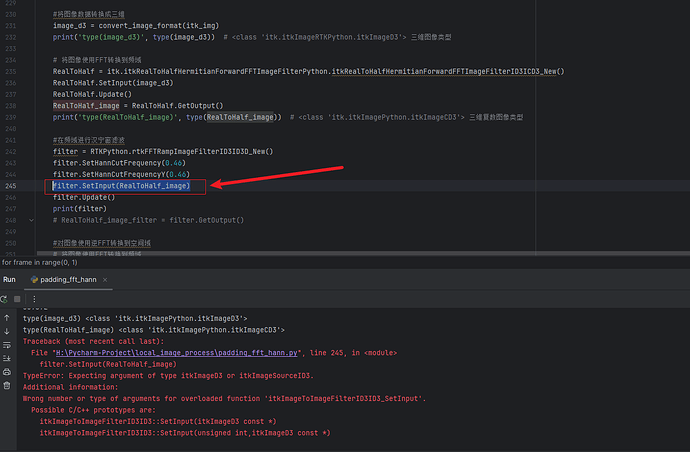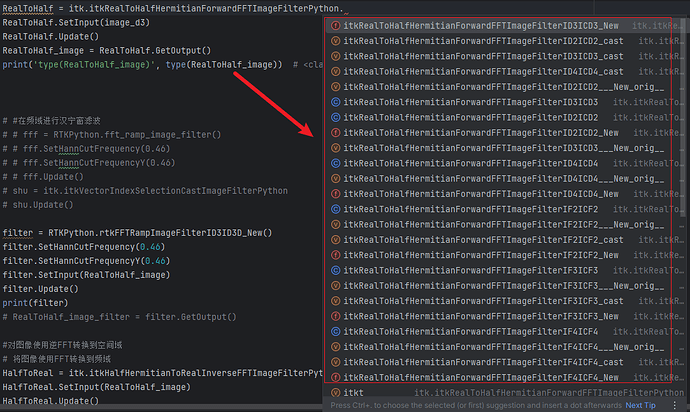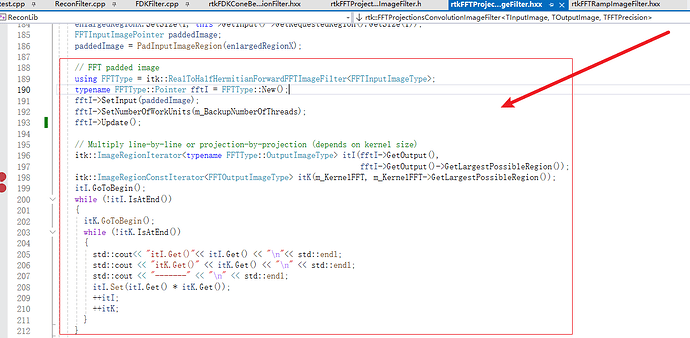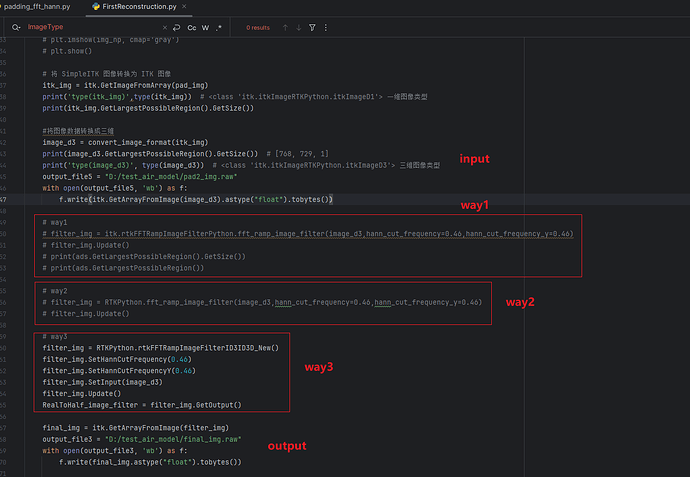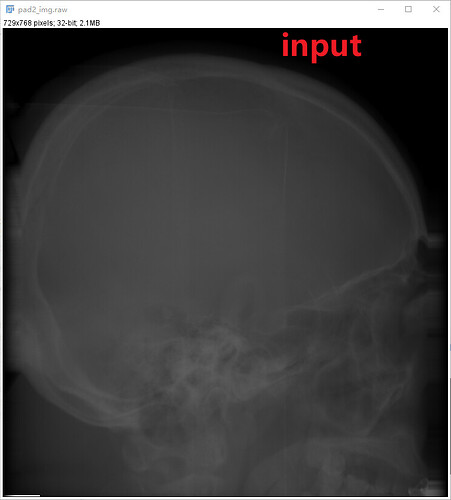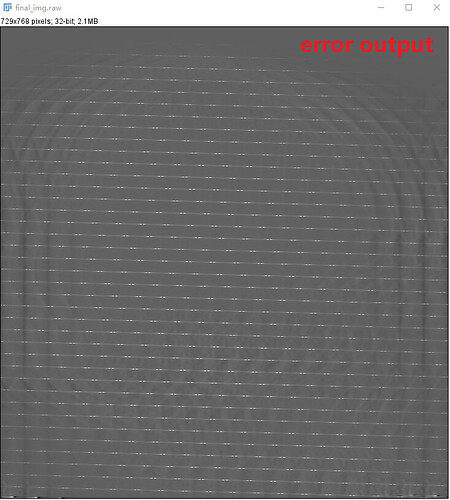Hello, I want to use simpleRTK in Python. I saw on the official website that I need to compile the ITK library first, then the RTK library, and check the BUILD_SIMPLERTK option; but now the RTK library doesn’t support separate compilation, right? Isn’t it only possible to check the Module_RTK option when compiling ITK and then compile ITK and RTK together? Then how should I compile simpleRTK and use it in Python?
Thanks!
@simon.rit might want to comment.
I did comment on the issue. SimpleRTK has been removed a while ago in favor of making RTK a remote module, see Enable build with shared libraries · RTKConsortium/RTK@f23cef7 · GitHub. The doc must be and will be (eventually and finally) updated but you should be able to do what’s in this example with the pypi package.
Thank you for your reply. I still have one more question to consult.
I used the itk.itkRealToHalfHermitianForwardFFTImageFilterPython.itkRealToHalfHermitianForwardFFTImageFilterID3ICD3_New() function to perform FFT transformation on the image, obtaining an image of type <class 'itk.itkImagePython.itkImageCD3'> .
Then, I wanted to apply Hanning window filtering to this image using the function RTKPython.rtkFFTRampImageFilterID3ID3D_New() , but an error occurred at the step filter.SetInput(RealToHalf_image) . Can’t this function accept an image of type <class 'itk.itkImagePython.itkImageCD3'> ? Or did I use the wrong function? How should I perform Hanning window filtering on the <class 'itk.itkImagePython.itkImageCD3'> type?
Appreciate for any reply.Thanks!
rtk::FFTRampImageFilter takes as input an image of scalar, takes its FFT, multiply it by the ramp (+a potential window) and computes its inverse FFT. So no, I don’t think you can pass an itk.itkImagePython.itkImageCD3.
Thanks!
However, after performing FFT using the function itk.itkRealToHalfHermitianForwardFFTImageFilterPython.itkRealToHalfHermitianForwardFFTImageFilterID3ICD3_New() , aren’t the data transformed to the frequency domain all of complex type (as shown in the following figure, for example, <class ‘itk.itkImagePython.itkImageCD3’>)? Do I need to convert the data of complex type to the data of <class ‘itk.itkImageRTKPython.itkImageD3’> type separately and then input it to the function RTKPython.rtkFFTRampImageFilterID3ID3D_New() for filtering? During the conversion, do I still need to retain the imaginary part of the complex number, or only retain the real part of the complex number?
ps: I have studied the corresponding operations in the C++ source code of our RTK(as shown in the following figure). In the source code, the same itk::RealToHalfHermitianForwardFFTImageFilter function as in Python is used to transform the data to the frequency domain, and then it is multiplied by m_KernelFFT . Isn’t the resulting frequency domain data of complex type? Or did I choose the incorrect function in Python?
Yes, RealToHalfHermitianForwardFFTImageFilter transforms the data to the frequency domain. But FFTRampImageFilter already does the itk::RealToHalfHermitianForwardFFTImageFilter so no need to do it yourself before using it. The intermediate complex image is not exposed. I have never used complex type input to FFTRampImageFilter, only scalar float images in the image domain.
Thanks for you helps!
Excuse me,sorry to bother.
I have one frame of image (as shown in the following figure), the image format is <class ‘itk.itkImageRTKPython.itkImageD3’>, and GetLargestPossibleRegion().GetSize()) is [768, 729, 1]. I want to apply the rtkFFTRampImageFilter() function for Hanning window filtering on this frame of image. I have used three methods: way1, way2, and way3 (as shown in the code), but why are the resulting images I obtained all incorrect? Is my usage of the function incorrect or is the function library I used incorrect?
Thanks for you help!
